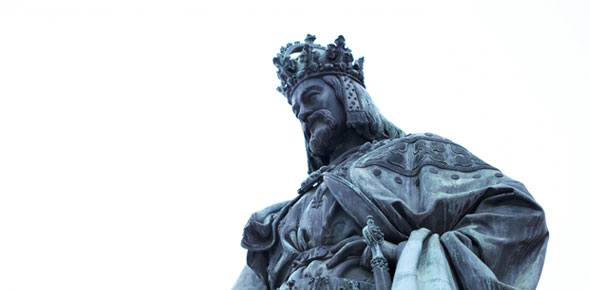Zinn Chapter 17 Quiz

This is a quiz on Chapter 17 in Howard Zinn's A Young People's History of the United States.
- 1.
Harry Truman ordered the ____________________ to be desegregated.
- A.
Armed forces
- B.
Schools
- C.
Churches
- D.
Workplaces
Correct Answer
A. Armed forcesExplanation
Harry Truman ordered the desegregation of the armed forces. This means that he commanded that all racial barriers and discrimination be removed within the military. This decision was significant as it marked a major step towards equality and civil rights in the United States. By desegregating the armed forces, Truman aimed to promote fairness and equal opportunities for all individuals serving in the military, regardless of their race or ethnicity. This action also had a broader impact on society, as it set a precedent for desegregation efforts in other areas of American life.Rate this question:
-
- 2.
Where did sit-ins occur during the Civil Rights Movement?
- A.
Fancy restaurants
- B.
Lunch counters
- C.
Schools
- D.
Buses
Correct Answer
B. Lunch countersExplanation
Sit-ins during the Civil Rights Movement occurred at lunch counters. Lunch counters were a common site of protest during this time, as they were segregated and denied service to African Americans. Activists would sit at these counters and refuse to leave until they were served, often facing violence and arrests. These sit-ins were a powerful form of nonviolent protest that helped to bring attention to the issue of racial segregation and discrimination.Rate this question:
-
- 3.
What did SNCC stand for?
- A.
Special Nonviolent Coordinating Committee
- B.
Special Nonviolent Church Convention
- C.
Student Nonviolent Church Convention
- D.
Student Nonviolent Coordinating Committee
Correct Answer
D. Student Nonviolent Coordinating CommitteeExplanation
SNCC stood for Student Nonviolent Coordinating Committee. This organization was formed during the Civil Rights Movement in the United States and played a significant role in organizing and coordinating nonviolent protests and actions against racial segregation and discrimination. The SNCC was composed mainly of young student activists who believed in the power of nonviolent resistance to bring about social change. They were instrumental in organizing sit-ins, freedom rides, voter registration drives, and other forms of peaceful protest to challenge racial injustice and inequality.Rate this question:
-
- 4.
Who were the freedom riders?
- A.
African-American people who participated in the Montgomery Bus Boycotts
- B.
African-American people who participated in the sit-ins
- C.
African-American and white people who worked together for freedom in the southern states
- D.
African-American and white people who worked together for freedom in the northern states
Correct Answer
C. African-American and white people who worked together for freedom in the southern statesExplanation
The freedom riders were a group of African-American and white people who worked together for freedom in the southern states. They were activists who rode interstate buses into the segregated southern states to challenge the non-enforcement of the United States Supreme Court decisions that ruled segregated public buses unconstitutional. They faced violent opposition and were often arrested, but their actions played a significant role in the civil rights movement and the eventual desegregation of public transportation.Rate this question:
-
- 5.
Who was the chief spokesperson of the Black Power movement?
- A.
Rosa Parks
- B.
Martin Luther King
- C.
Lyndon Johnson
- D.
Malcolm X
Correct Answer
D. Malcolm XExplanation
Malcolm X was a prominent figure and chief spokesperson of the Black Power movement. He was a civil rights activist who advocated for black empowerment, self-defense, and the separation of black and white Americans. Malcolm X's speeches and writings played a significant role in inspiring and mobilizing the Black Power movement, which sought to address systemic racism and promote black pride and self-determination. His strong stance against racial inequality and his call for black unity made him a key figure in the fight for civil rights during the 1960s.Rate this question:
-
Quiz Review Timeline +
Our quizzes are rigorously reviewed, monitored and continuously updated by our expert board to maintain accuracy, relevance, and timeliness.
-
Current Version
-
Mar 19, 2023Quiz Edited by
ProProfs Editorial Team -
Mar 12, 2012Quiz Created by
Humanities7
 Back to top
Back to top


